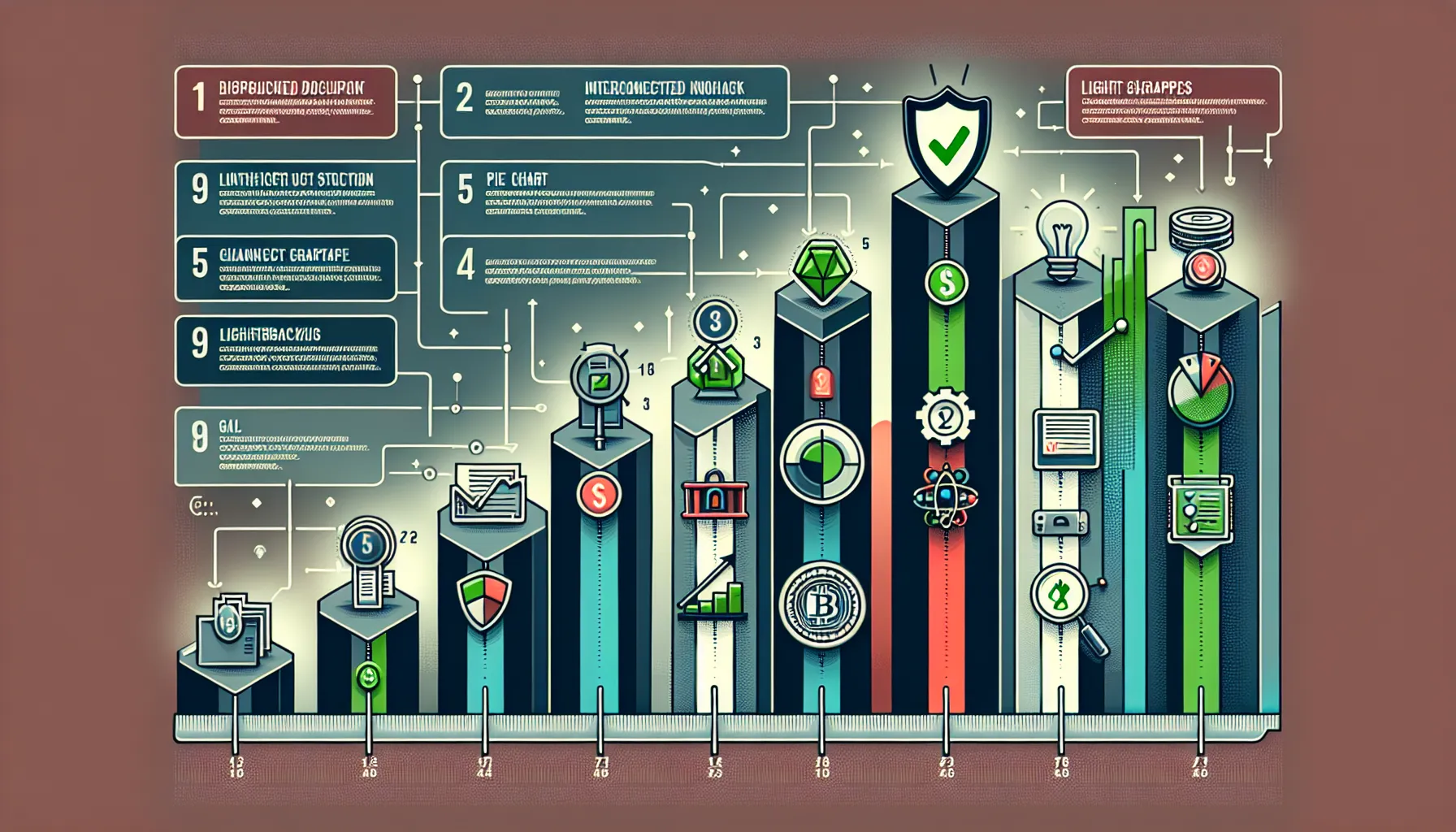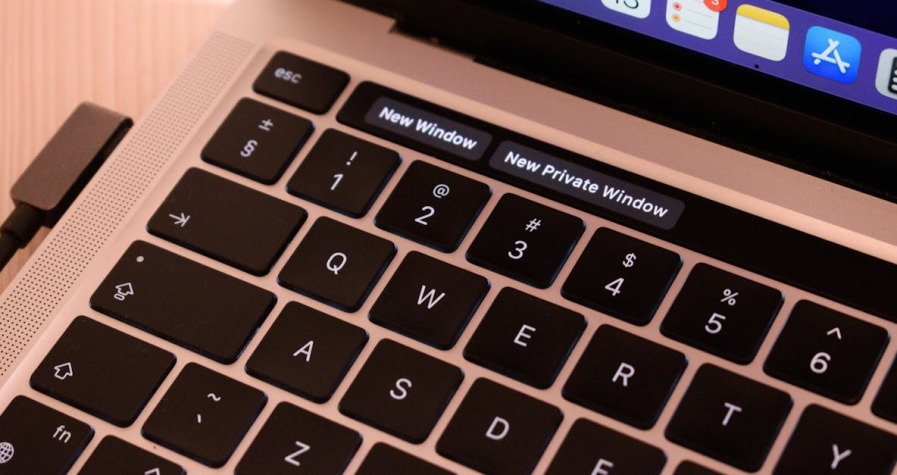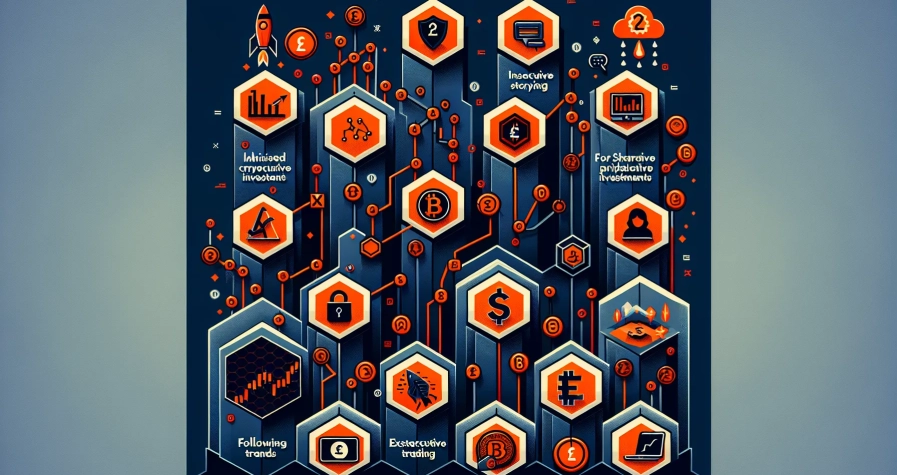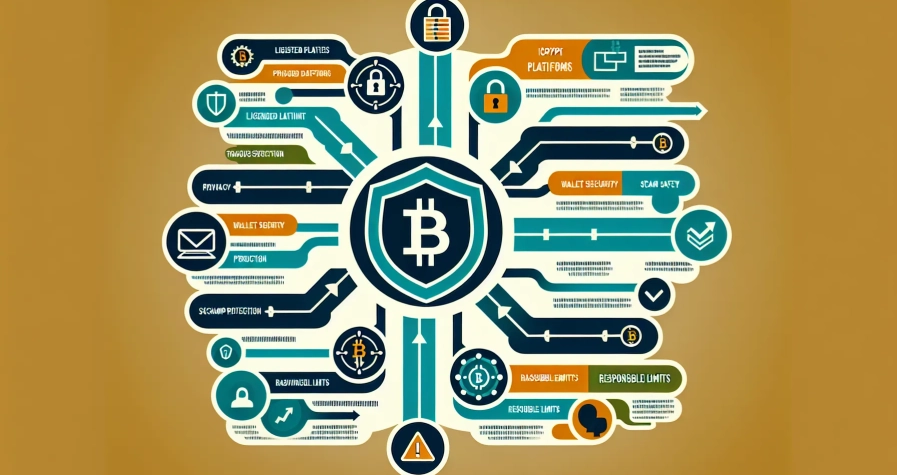The cryptocurrency market has delivered life-changing returns for some investors, and devastating losses for many others. The difference often comes down to one critical factor: due diligence. With thousands of projects competing for attention and capital, separating trustworthy crypto ventures from elaborate scams or poorly executed ideas is no easy task.
Before anyone invests a single penny, they need to know what separates legitimate projects from those destined to collapse or, worse, defraud investors. A trustworthy crypto project demonstrates transparency, technical rigour, and honest communication. It’s built by credible people, solves real problems, and operates within a framework of accountability.
This article explores 10 key signs that indicate a crypto project is genuinely trustworthy. These aren’t guarantees, crypto remains high-risk, but they are the essential markers experienced investors look for before committing funds. Each sign is backed by practical verification methods and tools, so readers can conduct their own informed assessments and avoid costly mistakes.
Key Takeaways
- A trustworthy crypto project features a transparent, verifiable team with proven track records that can be cross-referenced via LinkedIn, GitHub, and past achievements.
- Independent smart contract audits from reputable firms like CertiK or Quantstamp are essential markers of a project’s commitment to security and investor protection.
- Clear tokenomics with fair distribution, vesting schedules, and transparent allocation charts prevent insider manipulation and build long-term confidence.
- Real-world use cases and genuine problem-solving separate sustainable crypto projects from speculative ventures built purely on hype.
- Honest communication without unrealistic promises or pressure tactics is a hallmark of a trustworthy crypto project worth considering before you invest.
- Consistent development activity tracked via GitHub, blockchain explorers, and regular updates demonstrates a team’s long-term commitment and credibility.
1. Transparent and Verified Team Members
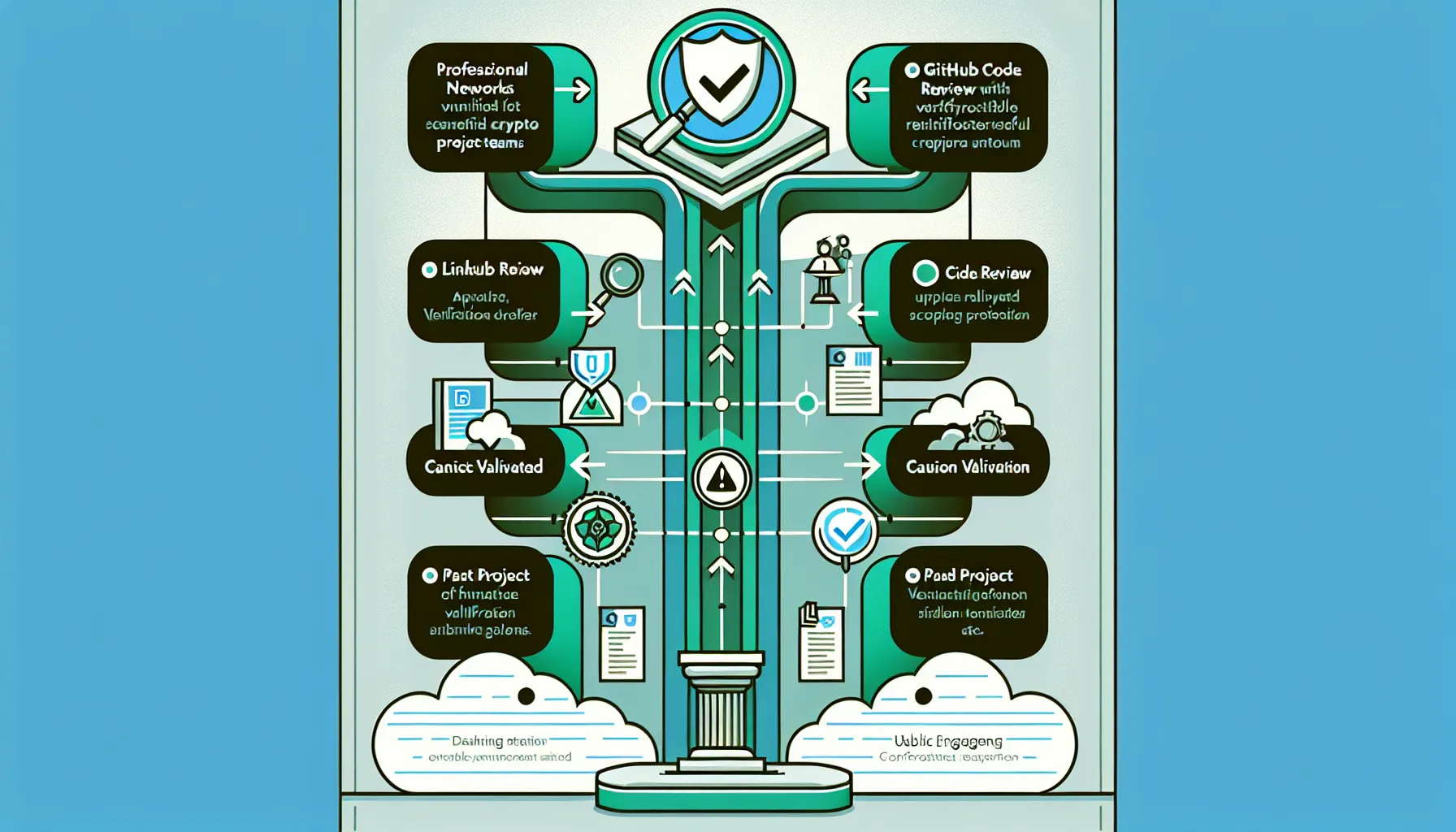
One of the first indicators of a trustworthy crypto project is whether the team behind it is public, verifiable, and credible. Anonymous or pseudonymous teams aren’t always malicious, some early projects, including Bitcoin itself, began this way, but they do introduce significant risk. Investors have no recourse if things go wrong, and there’s little deterrent against fraud or abandonment.
A legitimate project typically lists its founders, developers, and advisors by name, complete with professional backgrounds and prior achievements. These individuals should have a proven track record in blockchain technology, software development, finance, or relevant industries. Public accountability matters.
How to Verify Team Credentials
Verifying a team’s credentials requires more than reading an “About Us” page. Investors should cross-reference the following:
- LinkedIn profiles: Check whether listed team members have active, well-established profiles that align with the project’s claims. Look for endorsements, connections, and work history that match the narrative.
- GitHub contributions: For technical team members, review their code repositories and commit history. Real developers leave a trail.
- Past projects and roles: Research whether team members have successfully delivered previous projects, and look for any red flags such as involvement in failed or fraudulent ventures.
- Public appearances: Conference talks, podcasts, and media interviews add further legitimacy. Genuine leaders engage with the community and industry.
If a project lists team members with generic photos, vague titles, or profiles that can’t be independently verified, proceed with extreme caution. Transparency starts at the top, and credible teams have nothing to hide.
2. Clear and Realistic Whitepaper
A whitepaper is the foundational document that explains a crypto project’s purpose, technology, economics, and roadmap. It’s not marketing fluff, it’s a detailed technical and strategic blueprint. A trustworthy project publishes a whitepaper that is clear, logical, and grounded in reality.
The best whitepapers communicate complex ideas accessibly without oversimplifying or hiding behind jargon. They outline specific problems the project intends to solve, describe the technical architecture, explain the token’s role within the ecosystem, and present a realistic development timeline. Investors should be able to understand what the project does and why it matters.
Red Flags to Watch For
Not all whitepapers are created equal. Several warning signs suggest a project may be poorly conceived or intentionally misleading:
- Vague or recycled content: If the whitepaper reads like a generic template or borrows heavily from other projects without adding original insight, it’s a red flag.
- Overly complex language with little substance: Some projects use dense technical jargon to obscure the fact that they’re not offering anything new or viable.
- Unrealistic promises: Claims such as “guaranteed returns,” “revolutionary technology with no competition,” or “zero risk” should immediately raise suspicion.
- Missing key details: A legitimate whitepaper includes tokenomics, governance structures, security measures, and clear use cases. If these are absent or vague, the project may not be ready for investment, or may be intentionally opaque.
- No citation of technical standards or prior research: Credible blockchain projects build on existing protocols and reference established cryptographic or economic models.
Investors should read whitepapers critically and compare them to those of established, reputable projects. If something feels off or too good to be true, it probably is.
3. Independent Smart Contract Audits
Smart contracts are the backbone of most modern crypto projects, governing everything from token transfers to complex decentralised applications. But code is fallible. Bugs, vulnerabilities, and exploits can lead to catastrophic losses, millions of dollars have been stolen from projects with flawed smart contracts.
A trustworthy project commissions independent audits from reputable third-party firms before launching. These audits scrutinise the codebase for security flaws, logic errors, and potential attack vectors. Importantly, audit reports should be publicly accessible, allowing investors to review findings and understand what risks, if any, remain.
Reputable Auditing Firms to Look For
Not all audits carry the same weight. Some firms have established reputations for rigorous, thorough analysis. Look for audit reports from:
- CertiK: One of the most recognised names in blockchain security, CertiK audits high-profile projects and maintains a public database of its work.
- Quantstamp: A pioneer in smart contract auditing, Quantstamp has audited major DeFi protocols and layer-1 blockchains.
- Trail of Bits: Known for deep technical expertise, Trail of Bits works with both crypto projects and traditional enterprises on security assessments.
- OpenZeppelin: Plus to providing secure smart contract libraries, OpenZeppelin offers auditing services and has a strong track record.
- ConsenSys Diligence: Part of the ConsenSys ecosystem, this team specialises in Ethereum-based projects and DeFi protocols.
An audit isn’t a guarantee of safety, vulnerabilities can still emerge post-launch, but it demonstrates that the project takes security seriously. If a project has not been audited, or if the audit was conducted by an unknown or unverifiable firm, investors should view it as a significant risk.
4. Active and Engaged Community
A crypto project’s community is both its lifeblood and its litmus test. Trustworthy projects cultivate active, engaged communities where users, developers, and investors interact regularly. Community engagement reflects genuine interest, belief in the project’s vision, and ongoing dialogue between the team and its supporters.
Passive or artificial communities, those dominated by bots, paid shills, or echo chambers of hype, are warning signs. Real communities ask tough questions, offer constructive criticism, and hold the team accountable. They’re diverse, global, and participatory.
Where to Assess Community Sentiment
To gauge the health and authenticity of a project’s community, investors should explore multiple channels:
- Twitter: Follow the project’s official account and observe the tone and frequency of updates. Are they transparent and informative, or vague and hype-driven? Check replies and retweets for genuine engagement versus bot activity.
- Reddit: Subreddits dedicated to specific projects often host candid discussions. Look for a mix of positive and critical posts: overly sanitised or censored communities are suspect.
- Telegram and Discord: These platforms host real-time conversation. Join the project’s official channels and observe how the team responds to questions, concerns, and feedback. Active moderators and regular updates are positive signs.
- GitHub: For open-source projects, GitHub issues and pull requests reveal how the community contributes to development and how responsive the core team is to outside input.
A thriving community isn’t just about numbers, it’s about quality. Thousands of followers mean little if engagement is shallow or fabricated. Look for evidence of real people with real stake in the project’s success.
5. Transparent Tokenomics and Fair Distribution
Tokenomics, the economics of a cryptocurrency, determines how tokens are created, distributed, and used within an ecosystem. Transparent, fair tokenomics are hallmarks of a trustworthy project. They ensure that no single party has disproportionate control, that incentives are aligned, and that the project is sustainable long-term.
Investors should be able to easily find detailed information about total supply, circulating supply, allocation to founders and team members, vesting schedules, and mechanisms for inflation or deflation. Projects that hide or obscure these details often do so for a reason.
Warning Signs of Poor Token Distribution
Certain patterns in tokenomics should raise immediate concerns:
- High insider allocation: If founders, early investors, or the team control a large percentage of tokens without clear vesting schedules, they can dump holdings and crash the price.
- Unclear or missing allocation charts: A legitimate project publishes a clear breakdown of token distribution. If this information is absent or vague, assume the worst.
- Unfair launch or pre-mines: Projects that allocate significant supply to insiders before public sale create an uneven playing field. Fair launches, where tokens are distributed equitably from the start, are preferable.
- No lock-up periods: Team and advisor tokens should be subject to vesting or lock-up periods to prevent immediate sell-offs.
- Excessive supply concentration: If a small number of wallets control the majority of tokens, the project is vulnerable to manipulation.
Transparent tokenomics foster trust and long-term confidence. Projects that prioritise fairness and clarity in their economic design demonstrate respect for their investors.
6. Real-World Use Cases and Problem Solving
A trustworthy crypto project solves real problems or provides genuine utility. It’s not enough to launch a token and hope for speculative gains, sustainable projects address specific pain points, improve existing systems, or unlock new possibilities.
Investors should ask: What problem does this project solve? Who benefits from it? Is there demand for this solution? Projects with clear, compelling use cases are far more likely to gain traction and deliver long-term value than those built purely on hype or trend-chasing.
Examples of real-world use cases include:
- Decentralised finance (DeFi): Providing financial services, lending, borrowing, trading, without intermediaries.
- Supply chain transparency: Using blockchain to track goods from origin to consumer, reducing fraud and improving accountability.
- Digital identity: Offering secure, portable identity solutions that give users control over their personal data.
- Cross-border payments: Enabling faster, cheaper international transfers than traditional banking.
- NFTs and digital ownership: Creating verifiable ownership of digital assets, art, and intellectual property.
Projects that pivot constantly, chase trends, or offer no clear value proposition are high-risk. Trustworthy projects articulate their purpose clearly, demonstrate demand, and build products that people actually use. Utility trumps speculation every time.
7. Established Partnerships and Exchange Listings
Partnerships and exchange listings provide external validation for a crypto project. When reputable companies, institutions, or platforms associate themselves with a project, they signal confidence in its legitimacy and potential. These relationships are not guarantees of success, but they do indicate that the project has passed at least some level of due diligence.
But, not all partnerships are created equal. Some projects inflate or fabricate relationships to appear more credible than they are. Investors must learn to distinguish genuine partnerships from marketing fluff.
Distinguishing Genuine Partnerships from Marketing Fluff
To verify whether a partnership is real and meaningful, consider the following:
- Mutual announcements: Genuine partnerships are typically announced by both parties on official channels, websites, press releases, or social media. One-sided claims should be treated with scepticism.
- Depth of collaboration: Is the partnership substantive, involving technical integration, co-development, or joint ventures? Or is it merely a vague “strategic alliance”?
- Reputation of the partner: Partnering with well-known, credible organisations carries more weight than obscure entities. Research the partner’s track record.
- Evidence of activity: Has the partnership produced tangible results, products, integrations, joint events? If it’s all talk and no action, it may be superficial.
Exchange listings are another form of validation. Being listed on major, regulated exchanges like Binance, Coinbase, or Kraken implies that the project has undergone vetting and meets certain standards. Conversely, projects only available on obscure or unregulated exchanges carry higher risk.
Trustworthy projects build real relationships that add value, not just headlines. Investors should verify every claim and look for substance behind the announcements.
8. Consistent Development Activity
A crypto project’s development activity is a direct indicator of its health and commitment. Trustworthy projects don’t just launch and go silent, they continuously build, improve, and evolve. Regular updates, code commits, and feature releases demonstrate that the team is actively working towards its goals.
Stagnant or abandoned projects are common in the crypto space. Many launch with big promises, raise funds, and then disappear or stop developing. Investors can avoid these pitfalls by monitoring development activity before and after investing.
Tools to Track Development Progress
Several tools and platforms allow investors to track a project’s development in real time:
- GitHub: For open-source projects, GitHub repositories reveal how frequently code is updated, how many contributors are involved, and what features are being developed. Look for consistent commit history and active issue resolution.
- Blockchain explorers: Tools like Etherscan, BSCScan, or Solscan allow investors to monitor on-chain activity, including contract deployments, upgrades, and transaction volume.
- Official project roadmaps: Trustworthy projects publish detailed roadmaps with milestones and timelines. Check whether the team is meeting these targets or consistently missing them.
- Social media and blog updates: Regular technical updates, developer diaries, or blog posts indicate ongoing work and transparency.
- Community forums: Discord and Telegram channels often feature updates from developers and insights into what’s being built.
Projects with irregular or non-existent development activity are red flags. Even if the initial launch was promising, a lack of ongoing work suggests the team has lost interest, run out of funds, or never intended to deliver in the first place.
Consistent development is a sign of long-term commitment and a team that’s in it for the right reasons.
9. Regulatory Compliance and Legal Transparency
As the cryptocurrency industry matures, regulatory compliance has become a key marker of legitimacy. Trustworthy projects operate within legal frameworks, obtain necessary licences, and maintain transparency about their corporate structure and jurisdiction.
Whilst the regulatory landscape varies by country and is still evolving, projects that proactively engage with regulators, publish legal disclosures, and operate registered entities demonstrate a commitment to long-term sustainability and investor protection.
Investors should look for:
- Publicly disclosed legal entities: Trustworthy projects often register companies in jurisdictions with clear crypto regulations, such as Switzerland, Singapore, or the United States.
- Licences and certifications: Some projects obtain licences from financial regulators or comply with securities laws, depending on their token structure.
- Clear terms of service and privacy policies: Transparency around user rights, data handling, and legal obligations is a positive sign.
- KYC/AML procedures: Projects that require Know Your Customer (KYC) or Anti-Money Laundering (AML) checks may be more compliant, though this can vary based on jurisdiction and project type.
Projects that operate in regulatory grey areas or actively avoid compliance may face legal challenges, shutdowns, or penalties down the line. Whilst not every trustworthy project will be fully regulated, especially in emerging or decentralised spaces, those that prioritise legal transparency offer investors greater peace of mind.
Regulatory compliance isn’t just about avoiding trouble: it’s about building a sustainable, credible business that can thrive as the industry grows.
10. Honest Communication Without Hype
The final sign of a trustworthy crypto project is the tone and substance of its communication. Legitimate projects communicate honestly, acknowledge risks, and avoid making extravagant promises. They don’t oversell or manipulate their audience, they build trust through transparency and integrity.
In contrast, scam projects and poorly conceived ventures often rely on hype, urgency, and emotional manipulation. They promise guaranteed returns, use aggressive marketing tactics, and create artificial FOMO (fear of missing out) to pressure investors into quick decisions.
Spotting Unrealistic Promises
Investors should be wary of the following red flags in a project’s messaging:
- Guaranteed returns: No legitimate investment, crypto or otherwise, can guarantee profits. Claims like “10x guaranteed” or “risk-free gains” are hallmarks of scams.
- Pressure tactics: Phrases like “invest now or miss out forever,” “limited spots available,” or “once-in-a-lifetime opportunity” are designed to bypass rational decision-making.
- Celebrity endorsements without substance: High-profile endorsements can be bought or fabricated. Look beyond the celebrity and evaluate the project on its merits.
- Vague or evasive answers: If the team dodges tough questions, provides non-answers, or censors criticism, it’s a warning sign.
- Overhyped announcements: Projects that constantly tease “huge news” or “game-changing partnerships” without delivering create noise, not value.
Trustworthy projects communicate clearly, admit when things go wrong, and provide realistic timelines and expectations. They educate their community rather than manipulate it. Honest communication builds long-term credibility and investor confidence, qualities that far outweigh short-term hype.
Conclusion
Investing in cryptocurrency carries inherent risks, but conducting thorough due diligence can significantly reduce the chances of falling victim to scams or poorly executed projects. The 10 signs outlined in this text, transparent teams, clear whitepapers, independent audits, active communities, fair tokenomics, real-world use cases, genuine partnerships, consistent development, regulatory compliance, and honest communication, serve as a practical framework for evaluating any crypto project before committing funds.
No single sign guarantees success, and even projects that tick every box can fail. But, investors who take the time to verify credentials, assess risks, and look beyond the hype are far better positioned to make informed decisions. Trustworthy crypto projects earn confidence through transparency, accountability, and a genuine commitment to solving problems.
Before investing a single penny, ask the tough questions, use the tools and verification methods discussed, and never let urgency override due diligence. The crypto market rewards patience, scepticism, and well-informed choice-making, qualities that separate long-term investors from those who learn expensive lessons.
Frequently Asked Questions
What are the most important signs a crypto project is trustworthy before investing?
Key indicators include a transparent verified team, independent smart contract audits, clear tokenomics with fair distribution, active community engagement, and honest communication without hype. Additionally, consistent development activity and real-world use cases demonstrate genuine commitment and utility.
How can I verify if a crypto project team is legitimate?
Cross-reference team members through LinkedIn profiles, GitHub contributions, and past project involvement. Look for public appearances at conferences and media interviews. Genuine developers leave a verifiable trail, whilst anonymous teams with generic photos should raise immediate concerns.
Why are smart contract audits essential for crypto projects?
Independent audits from reputable firms like CertiK, Quantstamp, or Trail of Bits identify security vulnerabilities and code flaws before launch. Millions have been lost to exploited smart contracts, so publicly accessible audit reports demonstrate a project takes security and investor protection seriously.
What red flags in crypto tokenomics should investors avoid?
Warning signs include high insider allocation without vesting schedules, unclear token distribution charts, unfair pre-mines, and excessive supply concentration in few wallets. These patterns enable manipulation and sudden price crashes, indicating poor design or potential fraud.
Can a cryptocurrency project succeed without regulatory compliance?
Whilst some decentralised projects operate in grey areas, regulatory compliance significantly reduces legal risks and enhances long-term sustainability. Projects with disclosed legal entities, proper licences, and transparent terms of service demonstrate commitment to investor protection and industry maturity.
How do I distinguish genuine crypto partnerships from marketing hype?
Verify that both parties announce the partnership officially, assess whether collaboration is substantive rather than vague, research the partner’s reputation, and look for tangible results like technical integrations or joint products. One-sided claims without evidence often indicate superficial marketing tactics.

